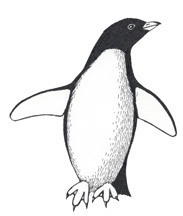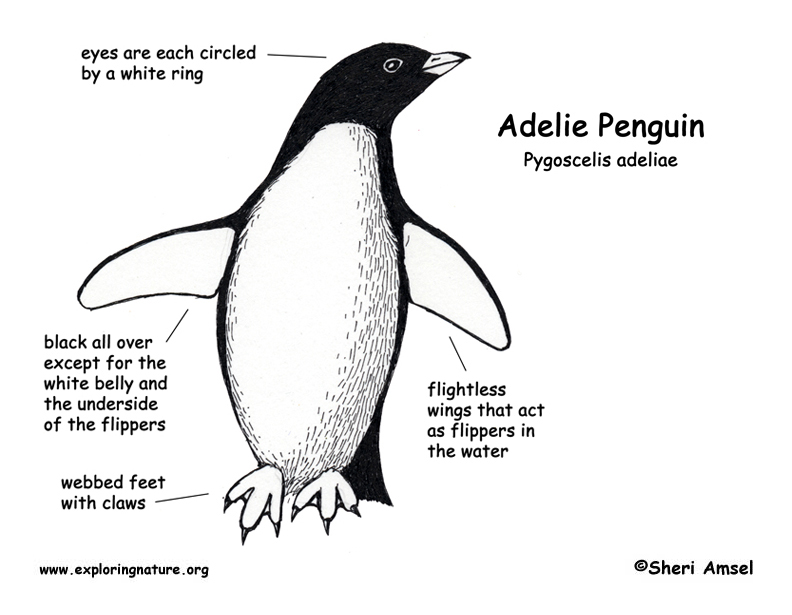

They are found in Antarctica.
They live on the Antarctic ice shelf and in the water around it.
They are 27" tall. They are black all over except for their white belly and the underside of their flippers. Their eyes are each circled by a white ring.
Adelies travel 30-100 km over the ice to reach their breeding colony every year. Some colonies may be 300 km from open water. They are hunted by leopard seals and other birds, like the skua, sheathbill, and giant petrel.
They eat small fish.
Thousands of Adelies gather together in large “rookeries” to mate and build rock nests for their 2 eggs from December to February. They don’t balance their eggs on their feet to keep them warm. They have a featherless, bare spot on their belly called a “brood patch” that keeps the eggs warm until they hatch after about 33 days.
Related Activites:
Penguin (Adelie) Coloring Page
Kingdom: Animalia
Phylum: Chordata
Subphylum: Vetebrata
Class: Aves
Order: Sphenisciformes
Family: Spheniscidae
Genus: Pygoscelis
Species: P. adeliae
When you research information you must cite the reference. Citing for websites is different from citing from books, magazines and periodicals. The style of citing shown here is from the MLA Style Citations (Modern Language Association).
When citing a WEBSITE the general format is as follows.
Author Last Name, First Name(s). "Title: Subtitle of Part of Web Page, if appropriate." Title: Subtitle: Section of Page if appropriate. Sponsoring/Publishing Agency, If Given. Additional significant descriptive information. Date of Electronic Publication or other Date, such as Last Updated. Day Month Year of access < URL >.
Amsel, Sheri. "Penguin (Adelie)" Exploring Nature Educational Resource ©2005-2024. December 13, 2024
< http://www.exploringnature.org/db/view/144 >

